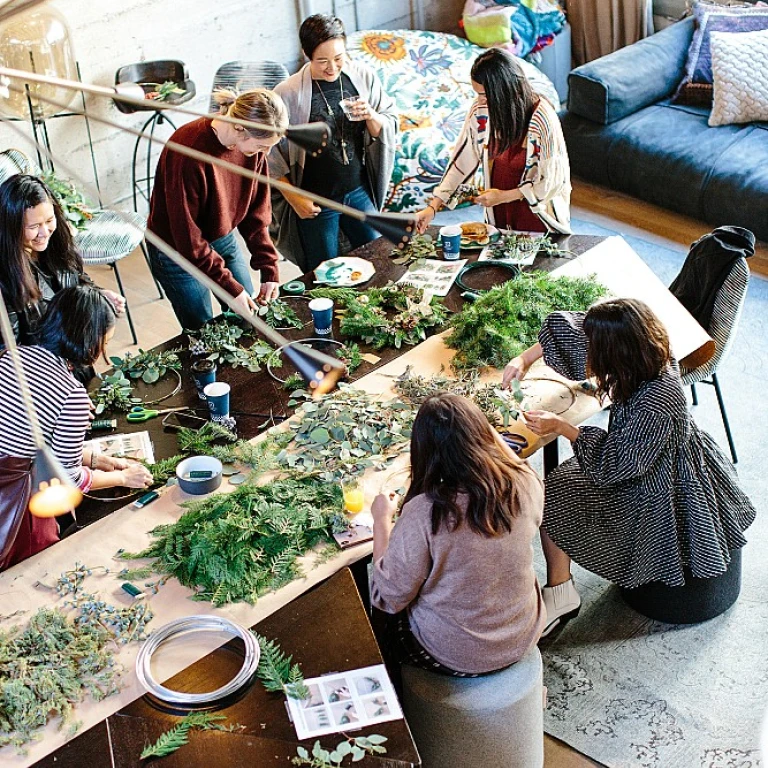
Understanding Customer Retention Software
Decoding the Essentials of Retention Software
Customer retention software is a pivotal tool for businesses aiming to enhance user experience and foster loyalty. At its core, this software is designed to help companies understand and improve customer behavior, satisfaction, and engagement. By leveraging data analytics, businesses can gain insights into customer interactions, enabling them to tailor their products and services more effectively.
One of the primary functions of retention software is to provide comprehensive customer feedback. This feedback is crucial for businesses to refine their customer service and support strategies. By analyzing feedback, companies can identify areas for improvement, ensuring they meet customer expectations and enhance overall satisfaction.
Another critical aspect of customer retention tools is their integration with marketing automation. These tools enable businesses to conduct targeted email marketing campaigns, designed to nurture customer relationships and promote loyalty programs. Through effective email marketing, companies can maintain regular communication with their customers, keeping them informed about new products, services, and special offers.
Furthermore, retention management software often includes features that support customer success initiatives. These features help businesses track customer engagement and loyalty, providing insights into how customers interact with their brand over time. By understanding these interactions, companies can implement strategies that improve customer experience and foster long-term loyalty.
Incorporating customer retention software into a business strategy requires careful consideration of pricing and product features. Many solutions offer flexible pricing models, often billed annually, allowing businesses to choose the best fit for their needs. It's essential to evaluate the software's capabilities, ensuring it aligns with your company's goals and customer support requirements.
For more on how full-screen testing can enhance product development and user experience, explore the importance of full-screen testing in product development.
The Intersection of Design and Retention Strategies
Design's Unique Role in Amplifying Retention Tactics
Design serves as a powerful vehicle for businesses to navigate the complexities of customer retention and loyalty. These user-centric experiences, when paired with strategic customer retention tools, ensure organizations can sustain and grow their customer base. The interplay between design and retention strategies is seen through intuitive user interfaces, streamlined interactions, and personalized customer journeys.
With pricing strategies being frequently scrutinized, design can assist in presenting these options in a clear and convincing manner, reinforcing value perception among customers. Enhanced user interfaces facilitate easier access to essential features such as retention management and billing details, often billed annually, which ultimately impact customer satisfaction.
Retention software is continually adapting to include sophisticated marketing automation and analytics tools. These features are geared towards improving customer behavior predictions and offering tailored recommendations. The integration of analytics helps businesses assess feedback and understand user preferences more completely, leading to improved customer service and support. Moreover, design ensures this data is presented clearly, enabling effective decision-making.
Through seamless service and customer support channels, design transcends mere aesthetics; it fosters meaningful customer engagement. Businesses that understand this symbiotic relationship can witness firsthand how precise design choices lead to improved loyalty programs and heightened customer interactions.
Key Features of Effective Retention Tools
Key Elements in Effective Customer Retention Solutions
In the competitive realm of customer engagement, businesses are increasingly turning to software tools to foster customer loyalty and improve satisfaction. These tools should include specific features that not only help retain existing customers but also enhance their overall experience.- Comprehensive Data Analytics: A crucial feature of retention software is its ability to provide detailed analytics on customer interactions and behavior. This functionality helps businesses understand customer patterns and preferences, enabling them to make data-driven decisions to boost retention rates. Such insights are vital for shaping loyalty programs that resonate with customer expectations.
- Seamless Customer Support Capabilities: Retention tools must offer robust customer service features that streamline support interactions. By integrating multi-channel support including chat, email, and social media, businesses can provide timely assistance, significantly enhancing customer satisfaction and loyalty.
- Feedback and Interaction Channels: Effective retention solutions facilitate ongoing feedback from customers, helping businesses continuously refine their offerings. Engaging customers in this dialogue underscores a commitment to improving their experience, subsequently driving loyalty and retention.
- Marketing Automation: Tools that automate aspects of marketing, such as targeted email campaigns, assist in maintaining a consistent engagement with customers. This fosters a sense of community and keeps the business top-of-mind, effectively nurturing long-term relationships.
- Simplified Customer Management: Integration with management software can streamline operations by allowing businesses to efficiently handle customer data and feedback. Efficient customer management leads to more personalized experiences, enhancing customer loyalty and retention.
- Retention Management and Pricing Strategies: To maintain competitiveness, retention software often includes pricing strategy optimization. With the ability to manage subscriptions and analyze pricing metrics, businesses can sustainably increase customer retention. For more on optimizing pricing strategies, consider exploring responsive design insights that ensure adaptability to varying customer contexts.
Case Studies: Successful Design Implementations
Real-World Success in Leveraging Retention Tools
The adoption of customer retention software has transformed how businesses adjust their strategies to improve both customer engagement and satisfaction. By examining real-world implementations, we can gain insights into effective design practices that prioritize user experience. Take, for instance, a leading e-commerce platform that integrated retention tools to boost customer loyalty. By launching personalized email marketing campaigns, the platform enhanced their product recommendations based on user behavior analytics. This strategy not only increased sales through targeted promotions but also deepened customer loyalty. The use of data analytics to understand and anticipate customer needs proved critical in crafting a truly personalized experience. Another case involves a subscription-based business that resorted to retention software to improve customer feedback and service interactions. By integrating customer support features within their app, customers received timely assistance, leading to higher customer satisfaction rates. This proactive approach to user support demonstrated the software's capability to affect customer retention positively. In the service industry, companies often face challenges in maintaining consistent customer experiences. A hospitality business, for example, leveraged retention management software to track customer interactions and promptly address feedback. By implementing a loyalty program, they rewarded frequent customers, thereby directly influencing the overall customer experience and retention metrics. These examples illustrate the tangible benefits that arise from effectively combining design elements with retention strategies. The alignment of customer needs with business goals demonstrates how retention tools can become a pivotal aspect of improved user experiences.Challenges in Integrating Retention Software into Design
Navigating Integration Hurdles
Integrating customer retention software into existing design frameworks can present challenges that businesses should be prepared to address. These obstacles are often multifaceted, stemming from technical, operational, and cultural aspects of an organization.Technical Complexities
One of the primary challenges is the technical aspect. Many businesses utilize a myriad of tools and software configurations for their customer engagement and retention efforts. Retention management systems need to seamlessly interact with existing platforms such as CRMs, analytics tools, and customer support systems. Ensuring that retention tools are compatible and can integrate without disrupting current operations is crucial. Technical teams may need to dedicate significant resources to achieve this alignment, which can entail custom development or configuring APIs.Data Management and Security
Data plays a pivotal role in shaping customer loyalty and satisfaction strategies. When incorporating retention software, businesses must ensure robust mechanisms for data management and security. Mismanagement can not only hinder customer success initiatives but also result in loss of trust if data leaks occur. It's vital to have protocols in place that adhere to data protection regulations and practices to maintain the integrity and confidentiality of customer feedback and behavior analytics.Aligning with Business Objectives
Retention tools should support the overarching business goals and should not function in isolation. They should complement marketing automation efforts and enhance customer experience across all interactions. This requires cross-departmental collaboration to ensure the retention strategy aligns with both short-term and long-term business objectives, including loyalty programs, email marketing campaigns, and enhancing customer engagement.Cultural Shifts Within Organizations
For successful integration, there may be a need for a cultural shift within the organization. Customer retention efforts need buy-in from all levels of an organization. Employees must be educated about the benefits of these tools and trained on how to use them effectively. This cultural adaptation helps ensure that everyone across the company supports the customer-first mentality, imparting greater impact on service quality and satisfaction. By addressing these challenges head-on, businesses can better harness the power of retention software, leading to improved customer interactions, loyalty, and long-term business success.Future Trends in Design and Retention Technology
Emerging Developments & Future Directions
In the ever-evolving landscape of customer retention, design, and technology are continuously reshaping how businesses address user needs and expectations. As customer expectations rise, so does the demand for innovative retention tools that leverage advanced analytics and personalization. Future trends in this domain hint at a few notable developments.- Hyper-Personalization through Real-Time Data: The ability to tailor customer interactions by analyzing real-time data is becoming crucial. Businesses are investing in sophisticated analytics to understand customer behavior and preferences at granular levels, allowing for dynamic personalization strategies. This effort enhances customer satisfaction and loyalty by making service feel bespoke and relevant.
- Integration with AI and Machine Learning: Artificial intelligence and machine learning are poised to further disrupt retention strategies. These technologies improve customer support by predicting user needs, recommending products, and streamlining the customer service experience. By automating these interactions, businesses can optimize operations and foster deeper customer loyalty.
- Seamless Omnichannel Experiences: Customers interact with brands across multiple platforms. Advanced retention management software now supports smoother customer engagement across channels, integrating effortlessly with marketing automation, email marketing, and customer feedback systems. Such tools ensure consistency in user experience and help in increasing customer retention.
- Enhanced Customer Feedback Mechanisms: Future tools will focus on improving how feedback is collected and acted upon. Businesses will deploy more sophisticated systems for gathering insights, fostering an environment where customers feel heard and valued. This setup not only aids in customer retention but also in customer success and the continuous improvement of products and services.
- Focus on Customer Experience: Customer experience remains at the forefront of design and retention strategies. As outlined in previous discussions, effective retention tools align with excellent design practices to offer meaningful experiences. Future developments will continue to emphasize intuitive interfaces and user-centric design, supporting long-term engagement.














